Gary Rosenblatt recently wrote an article further contributing to the literature of denialism in Jewish Education. The reality is, we know what works. Day schools and Yeshivas will produce more boys and girls tightly bound up with the destiny of the Jewish people. Jewish summer camps reinforce that picture. After-school and Sunday School programs do not produce results in the same league. While there is clearly a creaming effect when contemplating whether each system of education is successful or not, (Ie. parents who send their children to Jewish day schools and Yeshivas are themselves more greatly bound up with the Jewish destiny than those parents who are able to send their children to days schools and who choose not to when no extenuating circumstances intervene) the results cannot be denied.
Among the interesting "findings" of Rosenblatt's article include Jack Wertheimer's finding that parents of the secondary education approach see this system as merely Bnai Mitzvah preparation while the schools see their mission as giving children positive Jewish experiences. Both conceptual approaches are flawed.
If the parents merely want a good show Bar Mitzvah from their son and the school merely wants to produce a positive experience, Wertheimer's research demonstrates that the secondary approach meets the needs of the providers and consumers. Young people who have a show case Bar or Bas Mitzvah will clearly also have a positive experience. Case closed, Jewish education complete at 13 (or 12) years old.
The flaw of course is that a well educated Jew cannot be produced in 13 years and the process of education lasts a life time. When is that positive experience supposed to translate into anything but a fond memory when the student does not have the tools to learn? How does being able to chant a Haftora which tooks months to prepare equate to picking up a chumash and learning a Rashi?
And what of the dichotomy between what parents want and what they should want from Jewish education? Without trying to be snobbish, the gap is huge and unfortunate. How many parents who want merely to have a good Bar Mitzvah really care whether or not their child will ever learn a Mishna? Does it matter to most of these parents that the basic infrastructure of Jewish knowledge, the ability to interpret a posek of Chumash, to work through a Mishna, even to touch a Kitzur Shulchan Aruch, is not only beyond reach of most of these kids but unknown to them beyond highly superficial mention?
We are not talking about highly advanced learning here, just basics. Yes it is important too, {answering the hypothetical question} that the kids are comfortable attending a Conservativish Shabbos day service or Reformist Shabbos night service because they learned how to say some of the prayers. But, such a goal or conclusion to a child's Jewish education, I would answer is utterly a disaster waiting to happen. It is not a far stretch to blame such reasoning on the destructive out-marriage rates which have reduced Jewish population levels to a startingly low level when compared to natural growth rates of the American population since World War II.
Changing the dynamic is not up to the children, the congregations, the "movements", the educators, or the Federations/Boards of Education. The dynamic depends upon the parents demanding Jewish day school options for their children, replacing once and for all the reliance on after-schools and Sunday schools. Jewish day school attendance must continue to rise and new schools must be opened to meet the rising need. Schools must be able to accomodate the great range in knowledge and ability of these Jewish young. Money should be allocated by the Federations for these schools and for assisting those students financially who need help to pay tuition. This must become the highest domestic priority of Jewish organized philanthropy. Efforts must be made to convince the biggest donors to shift their giving priorites to K-12 day schools. Finding teachers to staff the growing interest in Jewish education will be difficult to say the least. Salaries must be comensurate with need and the monies must be allocated for this process. Day schools need not be managed under "Orthodox" auspices but we must demand that the Judaic curriculum teachers must be Shomrai Mitzvahs, Shabbos, Yiras Shomayim yidden, maybe teamed up with a education "professional" for class room management purposes.
I firmly believe this is a possible mission if and when the souls of the Jewish people link together. Surely a blessing for Shomayim cannot be that distant. The power of the Jews to bring Torah to the world is enormous and our mission cannot fail. It is the will to overcome the negativity generated by the Yetzer Hara which will be the greatest obstacle for only in areas where Torah obligations lie does the YH reside. But this too can be overcome and when it inevitably is overcome only good things could tidings will follow.
Reform and Conservative compalin Chabad proaching on their constituents The Jewish Week via Shturem.net
Gary Rosenblat, Editor, The Jewish Week (originally ran in The Jewish Week - 13 August 2008)
No matter what you call them — Hebrew schools, religious, congregational or supplementary schools — they have long been the whipping boy of American Jewish life, blamed for providing a superficial education and the most negative Jewish experience in a young person’s life.
But despite being derided as “bar and bat mitzvah factories” with little lasting positive impact, “supplementary schools continue to enroll the majority of students receiving a Jewish education” in the U.S., according to a census about to be released by the Avi Chai Foundation, which focuses on Jewish education.
The study, by Jack Wertheimer, a professor of American Jewish history at the Jewish Theological Seminary, estimates that about 230,000 youngsters attend these after-school or Sunday classes, generally one to three times a week.
(Another Avi Chai study, by Marvin Schick, found that 172,447 students were enrolled in Jewish day schools in 2003-2004.)
To no one’s surprise, Wertheimer found that there is precipitous drop in supplementary school enrollment after grade seven (meaning, after bar or bat mitzvah) — more in the New York area than other parts of the country — and that very few Jewish students make it to the high school level.
In addition, most of the schools have small enrollments (more than 40 percent have fewer than 50 students) and Conservative congregational schools are shrinking, in large part because “the number of Conservative families with school-age children has shrunk.”
Reform schools are dominant, accounting for 57 percent of all supplementary students, and only about 3 percent of Modern Orthodox children attend since most go to day schools and yeshivas.
“An overlooked phenomenon,” according to Wertheimer, is the rapid growth of Chabad-sponsored supplementary schools, with more than 400 nationwide, many of them having started in the last five years.
Some Conservative and Reform educators bitterly complain that the Chabad schools are poaching on their constituents, offering reduced tuition and no minimum requirement of time enrolled before providing a bar or bat mitzvah, compared to their three years of mandatory enrollment.
But others note that the Chabad schools have developed a sophisticated method of decoding the Hebrew language, called Aleph Champ, which is widely used and seems to be highly popular with youngsters. It is based on the karate motivational system of color-coded progression from white to black “belts” while gaining expertise in reading.
Wertheimer acknowledged that the census raises as many questions as it asks, mostly because there is relatively little hard data available nationally about even basic information.
The Board of Jewish Education in New York, for example, does not have up- to-date information on the number of schools and students under its aegis.
Robert Sherman, who has been CEO here for a year, said the BJE is working now on compiling that information.
One seeming disconnect that Wertheimer found in his study is that while most parents see the chief role of secondary schools as preparing children for bar or bat mitzvah, only 7 percent of the schools surveyed listed that as their primary goal. Most schools cited giving children positive Jewish experiences as their top objective.
Among the questions Wertheimer now poses, based on his study, are how to reconcile that gap between parents and educators on goals, as well as how to retain students post-bar and bat mitzvah, and how to influence more schools to incorporate Shabbat programs (either through attending services or communal activities) into the curriculum.
Wertheimer is at work on another study tracking 10 supplementary schools from around the country with a high success rate in terms of student retention, to see what works. One trend he has found is “an emphasis on the experiential, providing positive Jewish experiences, perhaps in reaction to the horror stories of how adults look back on their time in supplementary school.”
He says the big question that parents and educators should be asking themselves, and each other, is what they want youngsters to come away with from their time in supplementary school. Is it learning to read Hebrew, or the prayers, or Jewish history, or to observe rituals, or more generally to feel good about being Jewish?
Parents cannot reasonably expect their children to become scholars based on a few hours of study a week (often after a full day of secular classes). Wertheimer believes the key is to “find ways to complement the formal studies and informal Jewish experiences” at home, in school, in synagogue and, ideally, at a Jewish summer camp.
“It’s the combination that shapes Jewish identity,” he maintains.
Both Wertheimer and Sherman of the BJE of New York note that the supplementary high school programs with the most success tend to have a critical mass of students that not only allow for a variety of subject offerings, from courses to retreats to social action programs, but also have a strong social component so that it is “cool” to be enrolled.
Having a group Israel experience as a high school student is another strong identity marker.
But Sherman says there is now a serious debate among educators about whether Birthright Israel, which provides free 10-day Israel trips to 18-to-26-year-olds, is having a negative impact in that many parents are holding off on sending their youngsters to Israel on costly youth group tours, opting to wait a few more years for a free Birthright-subsidized trip.
Wertheimer’s report is intended to provide a census of supplementary schools, but as he notes, his work was “vastly complicated by the absence of a comprehensive list of schools.”
What he has provided is a starting point for collecting much-needed data and posing questions about the direction and very purpose of these schools.
We can complain about their lack of depth and other ills, but in the meantime they are still the gateway for most American Jewish youngsters who receive any kind of Jewish education. So it’s time we invest more research and creativity in this area to find out what’s working and what isn’t before we turn off yet another generation of youngsters to Jewish education.



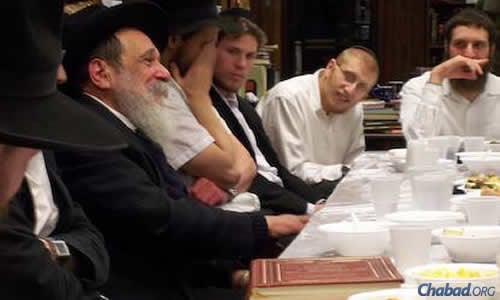





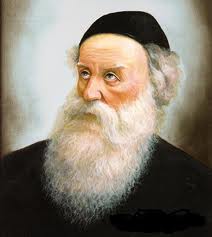





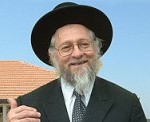




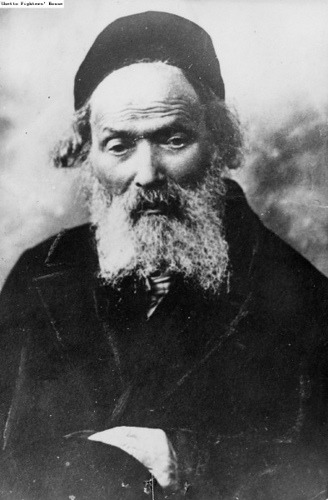


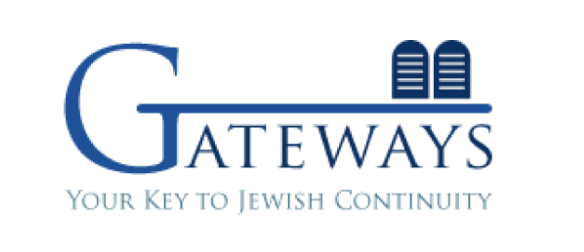
































0 comments:
Post a Comment